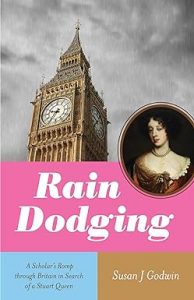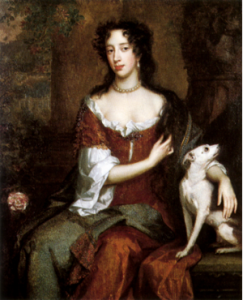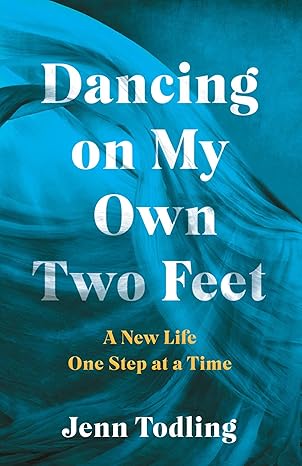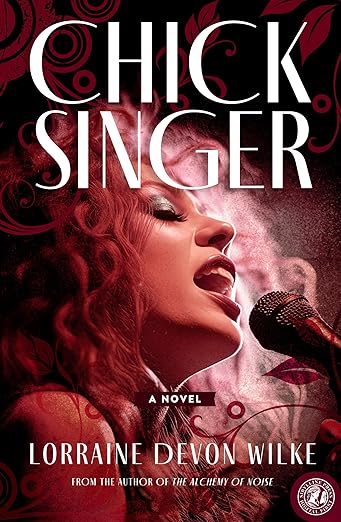Have Fun: Inspiration, Process, and Approach
Have Fun: Inspiration, Process, and Approach
 In 1653, Margaret Cavendish, Duchess of Newcastle —‘Mad Marge’— wrote that woman’s intelligence was equal to man’s, therefor women learned as easily.(1) She argued that the only difference was that men had more opportunities to educate themselves.
In 1653, Margaret Cavendish, Duchess of Newcastle —‘Mad Marge’— wrote that woman’s intelligence was equal to man’s, therefor women learned as easily.(1) She argued that the only difference was that men had more opportunities to educate themselves.
In 2nd and 3rd grade, Cindy Myers, Denise Wallenstein and I played ‘writer’ in Cindy’s basement—she had the roll top desk. Back then, motivation was improving my cursive. Now, it is the ‘seed.’
English majors find their own paper topics. At first, I froze: I was 42 years old, returning to university after more than two decades. Insurmountably, after reading Shakespeare’s Henry IV, Part I (The one where Prince Harry hangs out in taverns, drinking with Falstaff) I was thrust into the process. For me, it turns out ‘process’ means ‘finding the seed.’
Initially, I read, I read, I read.
Eventually, a ping.
I pay attention.
I keep reading.
If connections keep ringing, I pay closer attention. When I find the seed, my heart races a little. My face gets hot.
The click click click click click of my father’s 8-mm Bell & Howell projector.
Before I commit, I consider:
Is this topic engaging enough for an extended period of time?
Can I find books in the library and journals online?
Is this an original idea?
Have fun with your titles. Here are examples of former research paper titles:
The Seduction Game as Played by Elizabeth I and Shakespeare’s Cleopatra
Approaching Death and the Sublime
Marriage as Dance in Virginia Woolf’s To the Lighthouse
Who Knew! Humor as an Exercise in Power by the Playwright
I was blessed to attend Oxford for a term, fortunate to conduct literary research with Professor Peter McCullough, Sohmer Fellow of Renaissance Literature. For six invigorating weeks, I studied Eighteenth Century Literature and the Arts with the brilliant and sweet Peter. Only five others in the tutorial, we met three times a week in his spacious study. We scrutinized passages concerning Gardens in Paradise Lost, we looked at excerpts from Virgil’s Georgic, translated by John Dryden. We scratched the surface of Alexander Pope’s poem Windsor Forest. I discovered the literary essayist Joseph Addison, sending me on a search that resulted in an absorbing paper on imagination.
To top it off, regularly we traveled throughout London and the Cotswold’s, exploring architecture and manor garden designs. Peter’s course energized, making constant connections between history, literature, and artistic movements.
My Process
While researching my last Peter paper— The Night Time is the Right Time: Anne Finch, Countess of Winchilsea and her poem, Nocturnal Reverie—I stumbled into the late-17th century court of Queen Mary of Modena, consort to James II. There was something about her story that intrigued me.
the Click.
THE SEED.
the heart
the face
Pursue!
Before heading back to the states, I met with dear Peter to discuss a book idea. Peter, having stunned me with his compliment of my paper—“One of the most beautiful Bread Loaf papers I’ve read . . . The work of an artist by an artist”—was encouraging. True to his MO, he dashed to his computer, a curly dark brown lock one step behind and gathered up a beginning bibliography for me to pursue.

Mary of Modena by Willem Wissing, 1685. (public domain)
What was it about Mary of Modena (pronounced mo’ di nə/) that intrigued me? From the time she had been Duchess of York through her reign as queen-consort to James II, Mary of Modena had women in her court who were artists and writers, including Anne Finch. A court of women artists and writers was uncommon for the time. Intriguing. How did this come to be?
My process? Well, it mulls around in my head for a long long time. I scribble notes as I ask myself questions—click click click click click. As a visual learner, I envisage my reading. Think about your learning style as you develop your process, your method.
Part of the joy of research—and for me it is joyful—is the ability to explore freely. In contemplation and solitude, I needed to sense their spaces, to breathe the same air, to imagine their lives. Sense of place. The intangible, the pull. I applied for and received a fellowship to return to Oxford.
I was back in Oxford, to continue my study of the complexity of Mary’s court culture and to uncover as much as I could about these women and their unique literary and artistic accomplishments, so unusual for the seventeenth century. I had questions I felt compelled to answer regarding this captivating story.
In this case:
What exactly was court culture?
How might these women have interacted, inspired each other?
What was Mary’s role?
My Research Approach
Call me old-fashioned, I prefer hard copy books whenever possible: Citations that provide further resources are easily accessible. Post its, margin notes, underlining, highlighting all reinforce the finger/brain connection. Especially at my age! Have fun going down that rabbit hole.
Researchers may shudder, but I still use Google. Just keep following the trail. It will take you to websites that will offer other sites and valuable resources. You’ll follow those, keep-some-lose-some. Keep track of the URL’S! I cannot stress that enough. Use your time wisely: Make sure you have time to appreciate the joy of search. There is Nothing like a real library. Thank G-d for libraries. Please survive. Use Interlibrary Loan (ILL), a service that enables a patron of one library to borrow physical material that are held by another library. You can get books from practically anywhere.
Working online? Jstor is the go-to, World Cat . . . I’ll leave that information to the experts in that field.
Writing Process
I used to begin with paper and pen but have switch to starting on a Word doc. Somewhere along the way, I would have thought how do I want to open the piece and I would have taken notes or even begun to write. Usually an outline develops: it’s OK if it’s ‘messy.’
Have fun. Don’t be afraid. It’s the 21st century, you won’t need a Pink Pearl eraser.
1. Poems, and fancies written by the Right Honourable, the Lady Margaret Newcastle.
Newcastle, Margaret Cavendish, Duchess of, 1624?-1674.
London: Printed by T.R. for J. Martin, and J. Allestrye, 1653.
—
 As a fervent educator, writer, and freelance artist, Susan Godwin’s world has been steeped in books, from Harold and the Purple Crayon—she couldn’t resist drawing on her bedroom wall, no matter how many reprimands—to her first job as a library book mender in her Shaker Heights High School basement, to teaching English at the prestigious University School of Nashville.
As a fervent educator, writer, and freelance artist, Susan Godwin’s world has been steeped in books, from Harold and the Purple Crayon—she couldn’t resist drawing on her bedroom wall, no matter how many reprimands—to her first job as a library book mender in her Shaker Heights High School basement, to teaching English at the prestigious University School of Nashville.
England has a mystical hold on Godwin. She is blessed to be an Oxford scholar. As well, the author has received writing awards from the University of Michigan, Middle Tennessee State University, and Bread Loaf School of English. Whether working as a teacher or librarian, as a free clinic mental health coordinator or a cocktail-waitress in country-western dive, she has adventured! Be it Cleveland in the 70s, L.A. in the 80s, or the South of the 90s, each place has impacted who she is, her curiosities, her intellect, her view of the world. Steeped in each, they helped develop a dynamic, diverse cultural perspective.
Though writing is her true passion, she is also a visual artist working primarily in oils and pastels. Her fearless daughter, Jesse, is a litigation attorney in Los Angeles. Godwin loves nothing more than visiting—an excuse for hitting the back roads in her mother’s old Mustang convertible. A columnist for The Tennessean newspaper once dubbed her “Renaissance Woman,” which close friends still call her with humor and affection.
Godwin’s home is outside of Nashville, on the banks of a winding Tennessee river, in a hayloft renovated by her “sweet, sexy” husband, Tony—with help from their rotty, Roady!
—
Scholar Susan Godwin is hooked when she comes across the captivating story of Mary of Modena—a seventeenth-century Italian princess who was only fourteen when coerced into marriage with the future king of England, James II, yet went on to cultivate a court full of women writers in an age when female authorship was rare. How did Mary achieve such a feat?
Rain Dodging: A Scholar’s Romp through Britain in Search of a Stuart Queen
Rain Dodging is Susan’s creative nonfiction account of the years-long search upon which this question—and her own unquenchable curiosity—launched her. Godwin travels through both space and time, solo adventuring through Britain in pursuit of truth and, in a spicy parallel arc, chronicling her own cluttered but resilient feminist path. From schizophrenic lovers to out-there musicians to one unhinged mother, Susan tells the story of her personal enlightenment even as she visits the palaces and manor houses in England and Scotland Mary once inhabited and pores over materials in Oxford’s stunning 400-year-old Bodleian Library, finding moments of transcendence and unexpected delight along the way.
Join Susan in this irreverent and illuminating journey—a fascinating account of the late Stuart monarchy, the progression of feminist history, and the unexpected connection between the two.
BUY HERE
Category: Contemporary Women Writers, How To and Tips




























